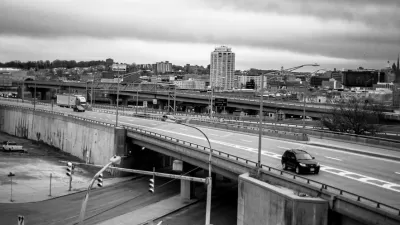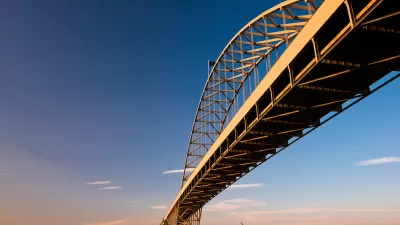Experts recommend a more rigorous focus on equity considerations as the federal government begins to select projects to fund through the Infrastructure Investment and Jobs Act.

An article by Carlos Martín, Andre M. Perry, and Anthony Barr asks, "Unlike the massive federal expenditures of the past, does the new infrastructure law cement racial equity into our built environment?" The authors assess the inclusion of equity considerations in the Infrastructure Investment and Jobs Act (IIJA), noting "seven ways in which equity is not prioritized" and how these gaps could be addressed.
According to the authors, the biggest and most consequential oversight in the bill is the lack of "targeted and transparent earmarks" aimed specifically at disinvested communities. "Without the sticks of rigorous and explicit statutory requirements on how states can use the funds, states may not even consider equity when selecting their projects—as what happened recently with large block grants in the American Rescue Plan." The authors recommend close monitoring of projects to ensure a focus on equity.
The article also recommends refining competitive grants to center equity, building local capacity in disinvested places, integrating economic development with equitable job opportunities, and acting quickly to start implementing projects. However, the authors warn that "if we want to ensure prosperity for all in the future, the IIJA is only a down payment on the debt that is owed to communities who have been denied resources."
FULL STORY: How equity isn’t built into the infrastructure bill—and ways to fix it

Alabama: Trump Terminates Settlements for Black Communities Harmed By Raw Sewage
Trump deemed the landmark civil rights agreement “illegal DEI and environmental justice policy.”

Planetizen Federal Action Tracker
A weekly monitor of how Trump’s orders and actions are impacting planners and planning in America.

Why Should We Subsidize Public Transportation?
Many public transit agencies face financial stress due to rising costs, declining fare revenue, and declining subsidies. Transit advocates must provide a strong business case for increasing public transit funding.

Understanding Road Diets
An explainer from Momentum highlights the advantages of reducing vehicle lanes in favor of more bike, transit, and pedestrian infrastructure.

New California Law Regulates Warehouse Pollution
A new law tightens building and emissions regulations for large distribution warehouses to mitigate air pollution and traffic in surrounding communities.

Phoenix Announces Opening Date for Light Rail Extension
The South Central extension will connect South Phoenix to downtown and other major hubs starting on June 7.
Urban Design for Planners 1: Software Tools
This six-course series explores essential urban design concepts using open source software and equips planners with the tools they need to participate fully in the urban design process.
Planning for Universal Design
Learn the tools for implementing Universal Design in planning regulations.
Caltrans
Smith Gee Studio
Institute for Housing and Urban Development Studies (IHS)
City of Grandview
Harvard GSD Executive Education
Toledo-Lucas County Plan Commissions
Salt Lake City
NYU Wagner Graduate School of Public Service





























